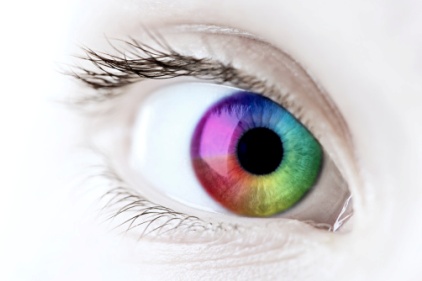What are the symptoms of various vision problems?

 Here are common symptoms associated with eye problems:
Here are common symptoms associated with eye problems:
Nearsightedness: Blurred vision that's worse when you are looking at distant objects suggests that you may be nearsighted, or myopic. People with myopia often have very good near vision.
Double vision, or diplopia, is a symptom to take seriously. Some causes of diplopia are relatively minor, but others need urgent medical attention. WebMD takes a look at the causes, symptoms, and treatments of double vision.
Farsightedness: Blurred vision that's present when you are looking at near objects or, more commonly, near and far objects indicates that you may be farsighted, or hyperopic.
Astigmatism: Blurry vision can occur at any distance and usually coincides with discovery of other vision problems.
Retinal detachment: An abrupt onset of flashing lights, often in combination with black floating spots in your vision, possibly combined with the sensation of a dark curtain or veil blocking a portion of your vision, suggests retinal detachment. Cover each eye separately and compare the sight in each eye.
Color blindness: Difficulty distinguishing shades or intensity of color may suggest a color perception problem. Color vision defects are usually not known to the patient until discovered upon testing, and it is mainly a condition in males.
Night blindness: Difficulty distinguishing objects in dim light is a sign of possible night blindness.
Cataracts: Because cataract development is usually a gradual process, your first symptom may be trouble passing the vision test when renewing your driver's license, or it may be identified during a routine eye exam. Symptoms include:
- Hazy vision that might be worse in bright light
- Weaker vision at night; difficulty in discerning movements, details, or objects (especially street signs)
- Blinding or uncomfortable glare from automobile headlights or bright sunlight
- A need for brighter light for reading
- Colors appearing faded or yellowed
- Double or triple vision (overlapping images) in one eye only
- A milky white or opaque appearance to the normally dark pupil (advanced case)
- Painful inflammation and pressure within the eye (very advanced case)
Strabismus: Eyesdon't move together in a coordinated pattern or may be crossed inward or outward. Young children with vision problems such as this may rub one or both eyes frequently and may squint, tilt their heads, or close one eye in order to see things better.
Amblyopia is a loss of vision from an eye that is crossed inward or outward or otherwise blocked from seeing properly as in a droopy eyelid or undiagnosed need for eyeglasses in that eye.
Glaucoma
Symptoms may depend on the type of glaucoma:
Chronic open-angle glaucoma typically shows no symptoms until significant damage has occurred.
Acute glaucoma signs include sudden onset of severe throbbing eye pain, headaches, blurred vision, rainbow halos around lights, redness in the eye, nausea, and vomiting. Acute glaucoma is a medical emergency.
Secondary glaucoma symptoms are highly variable and correspond with the underlying primary problem.
In infants, teary or cloudy eyes, unusual sensitivity to light, and enlarged corneas are signs of congenital glaucoma. One or both eyes can be affected.
Macular degeneration
Symptoms include:
- Dim or distorted vision, especially while reading. Straight lines often appear crooked.
- Gradual, painless loss of precise central vision.
- Blank spots in your central field of vision.
Source: WebMD
Looking for a reprint of this article?
From high-res PDFs to custom plaques, order your copy today!


